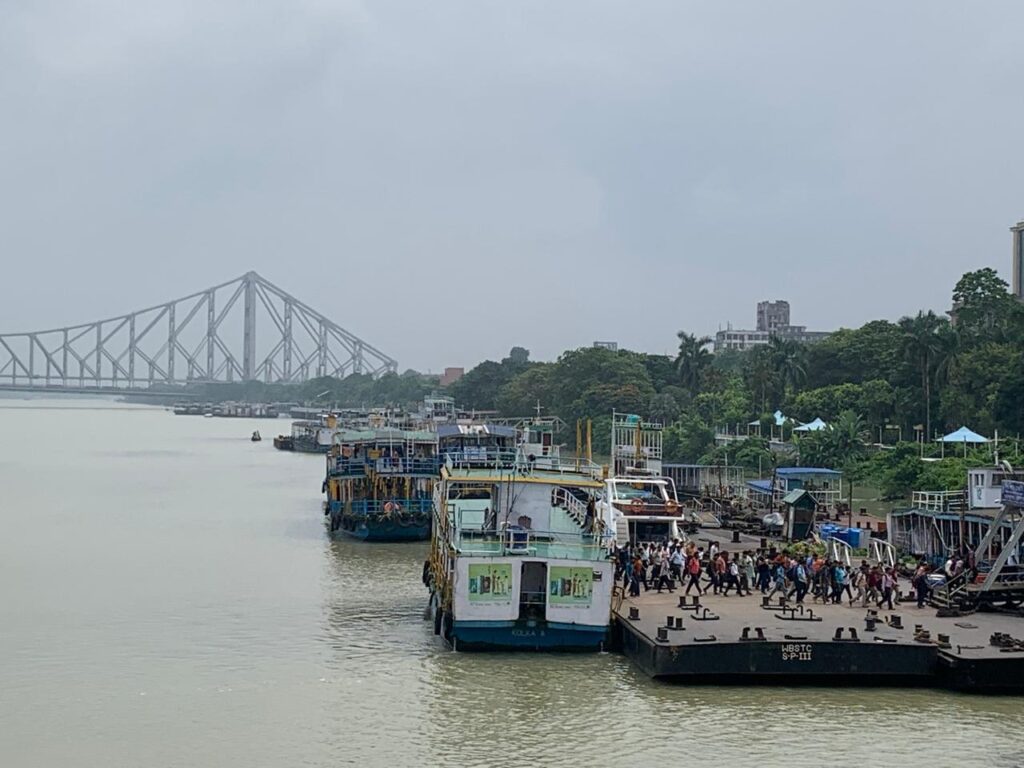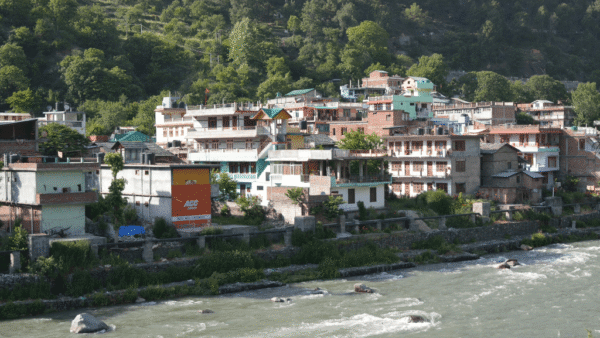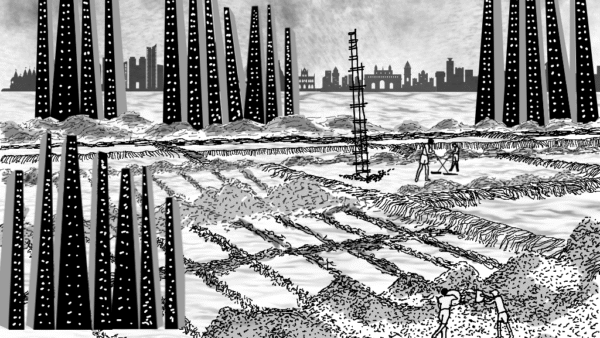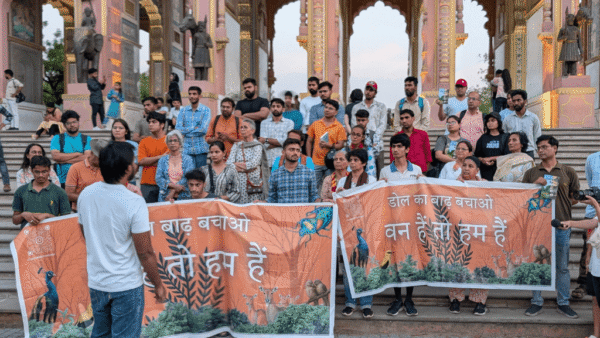In cities, rivers are largely unseen, ignored, considered as receptacles of waste, or treated as yet another infrastructure project with riverfront development that has lately caught the fancy of governments. Hundreds of cities across India are on the banks of rivers or have developed around rivers. But, somehow, the rivers have not become an inalienable part of life in these cities.
Occasionally, they are brought to the foreground like the Yamuna in Delhi when sections of it show unbelievable pollution of flooding, or the Mithi in Mumbai which turned into a meme after its re-discovery 20 years ago when flash floods inundated the city, or the Cauvery over which an annual row erupts between Karnataka and Tamil Nadu. The monsoon months, by default, are when rivers in cities are discussed, riverbeds desilted, and waters cleaned up to augment the carrying capacity so that cities will not flood. Then, they are forgotten.
The relationship of cities with their rivers, where it exists, is mainly utilitarian, centred on what purpose they serve. Their utility value is one aspect but the urban imagination does not go beyond it. There are more layers to the people-river relationship. The ecological aspect is one. The rich riverine ecology and the complex biodiversity that a river supports, its point of origin and its dispersal or merger with the sea, its confluences, and the impact of human activity are rarely discussed. The cultural aspect is another. The flows and currents of rivers have been the fount of poetry, literature, mythologies and more; art has drawn inspiration from them.
To reestablish and reconnect people’s relationship with the rivers in their cities calls for a different imagination of rivers in city-making itself. Rivers cannot be renewed in isolation, with standalone projects like riverfront developments. The renewal, reconnection, must be a part of city planning and development. It begins by recognising the rivers, respecting their terrains, defining their areas including the floodplains as strict no-development zones, and restoring their waters to health.
This is, of course, easier prescribed than done especially when rivers are seen as the canvas for construction of embankments, concretised walls, and riverfronts with leisure activities. The alternative is really no alternative at all – rivers remain the filthy and stinky sewage drains, human activities encroach on their floodplains, and so on. When rivers and riverine ecology are restored, they will naturally carry more rainwater and, thus, help in flood control in cities. To limit rivers to channels of flood control during the monsoon is short-sighted – an outcome of seeing rivers only through the utilitarian lens.
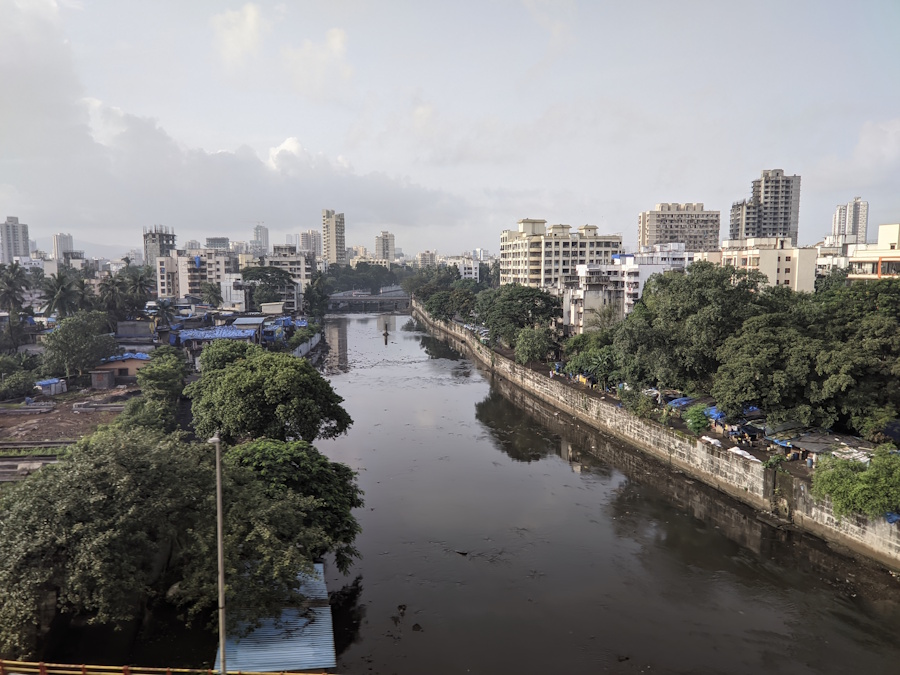
Photo: Wikimedia Commons
See, recognise, rivers in cities
Change begins with seeing anew. Rivers in cities are hidden in plain sight like the Mithi or other rivers in Mumbai. Millions of people pass by them every day but do not really see them as rivers that can nourish the city. Rivers as filthy drains is the predominant image in people’s imagination. This must change. Neighbourhoods come up on the floodplains, both the small poor ones and the large affluent ones, but these people too have a utilitarian relationship, if at all.
Several low-income settlements, industrial and recycling units lie along sections of the Mithi, waste pickers make a living from collecting recyclables, fisherfolk still earn a livelihood from the river. And 947 industrial units lie on its banks, according to the Maharashtra Pollution Control Board’s action plan.[1] Around 37,000 people live along the Yamuna in Delhi including the Gotakhors, a traditional diving community,[2] and farmers who are now struggling to grow vegetables.[3]
These people see the river though largely in terms of the purpose it serves; the rest of the city does not even see. This must change. Cleaning up the rivers, ensuring Sewage Treatment Plants are working, opening up riverbanks and giving access to people to interact with the rivers are some ways to make people ‘see’ them. The people-river connection has to be rebuilt so that rivers find a place in the popular imagination, a kinship develops, which nudges people to feel a sense of ‘ownership’ and participate in the maintenance of rivers.
Recognising the river in official documents and plans is an important step. Often, as experts working on riverine systems say, rivers are not properly marked in official plans. If a river, with its ecosystem and floodplains, is not shown in plans, the chances of it being protected and restored are bleak. The recognition and ‘seeing’ of rivers must go beyond their role as water suppliers to cities as in Bengaluru (Cauvery) or Mumbai (Vaitarna, Bhatsa), and their use as sewage carriers of cities.
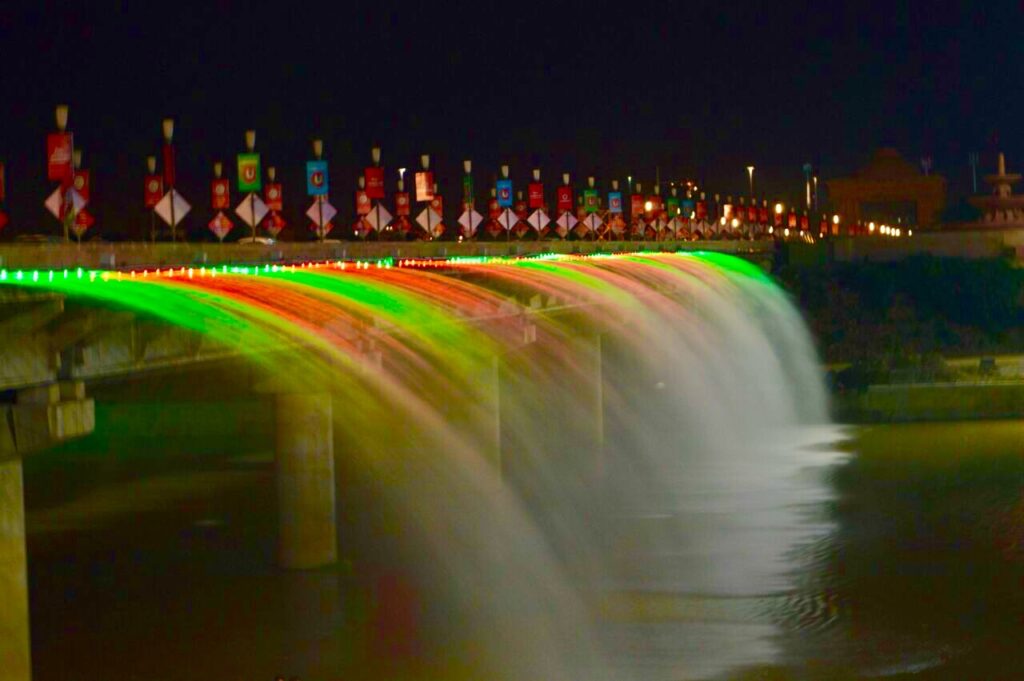
Photo: Wikimedia Commons
Rights of the river
As cities developed and expanded, the floodplains and land around rivers became precious real estate, occupied either by slum tenements of the marginalised people who could not afford anything better or by deliberate planning of business districts, leisure centres, luxury housing for the wealthy. The Mithi in Mumbai has both but only one, the slums, are considered ‘encroachments’ while planned encroachments like sections of the Bandra Kurla Complex, an expensive and sought-after location, are legal.
The rights of rivers have to be acknowledged before they can be put to human use, Lucknow-based Professor Venkatesh Dutta of the School of Earth and Environmental Sciences, Babasaheb Bhimrao Ambedkar University, told Question of Cities. “The first principle is the right of the river to its land. The river is not just a channel of water. It is also connected waterscapes – wetlands, ponds – forests, riparian areas, wildlife corridors, floodplains. A river is a total integrated system; it’s not unitary.”
Whether the Yamuna or the Mula-Mutha in Pune or any river that inundates cities during heavy rainfall, the rights of rivers would include the space for water to swell, the acknowledgement of natural floodlines. This makes it incumbent on planners and governments to respect the land – which might seem developable and profitable – that rightfully belongs to the rivers, mark the red and blue floodlines clearly to prevent all kinds of encroachments, and implement the no-development rule.
The floodplains is not ‘land’ for us, it belongs to the rivers. It must not be used to house massive infrastructure projects like Delhi’s Commonwealth Games Village, Akshardham Temple, Yamuna Bank Metro Depot, Shastri Park Metro Depot or entire precincts like the Bandra Kurla Complex. Cleaning the rivers without adding tons of concrete and allowing the rivers their space – their land – to swell when necessary would help restore rivers, which in turn, can contain flooding in cities. Water needs space too, especially during the monsoon.

Photo: Wikimedia Commons
Construction, walls to riverfronts, as ‘solution’
In the urban imagination, rivers have to be ‘managed’ and constructed upon to fulfil human needs, also the ambitions of a certain class. This ‘river management’ perspective is evident even in the National Institute of Urban Affairs, the central government’s go-to for policies on urban issues, through its Rivers Cities Alliance which now covers about 145 cities.[4]
Urban river management is the in-season approach that states and cities are adopting though the very concept of ‘urban river’ has been challenged by activists and experts. In this, governments attempt to control or contain floods by resorting to more and more construction. So, rivers in cities have been subjected to retaining walls to keep out the rainfall inundation, embankments to define the edges of rivers and prevent erosion, and riverfront development projects to ‘beautify’ the banks and promote leisure activities.
The concretisation of riverbanks and floodplains impedes the water flow and adversely impacts the riverine ecology, building retaining walls have been shown to be detrimental. Yet, increasingly, cities have embraced these as ‘river management’. In Nagpur, people’s angst is that the promised retaining walls along the Nag, Pili and Pora rivers, costing nearly Rs 205 crore, have not yet been constructed.[5]
Mumbai’s Mithi has retaining walls as a flood control measure and to prevent encroachment but their efficacy has been questioned. Some residents say the walls helped prevent flooding but the Supreme Court-appointed experts’ committee averred that the walls were “not as per riverine methodology,” had reduced the width of the river, their impervious nature prevented water from seeping into the ground, and they had been built on both sides even in verdant areas like Aarey “thus preventing the interaction of river with the forest itself”.[6]
The committee noted that the walls, upto three metres high, gave no scope for water to flow to and fro the river during heavy rainfall which meant flooding in nearby areas.
Riverfront development, as part of ‘river management’ is a scam that has little to do with cleaning or rejuvenation of the river but more to do with construction contracts, say academics and activists tracking this. From the Sabarmati project, the template repeated across India, there are an estimated hundred riverfront development projects around the country. These projects have not always prevented wastewater from entering rivers and, in some cases, have exacerbated the crisis due to the non-functioning intercepting drains.
Even the Smart Cities Mission had 61 such projects. An assessment by the Delhi-based School of Planning and Architecture, in 2024, showed that the highest number of them were a “boost to local identity and economy” and suggested that stricter environmental guidelines and monitoring mechanisms be established. It also recommended that the riverfront development projects are integrated into the development plans or master plans of cities.[7]
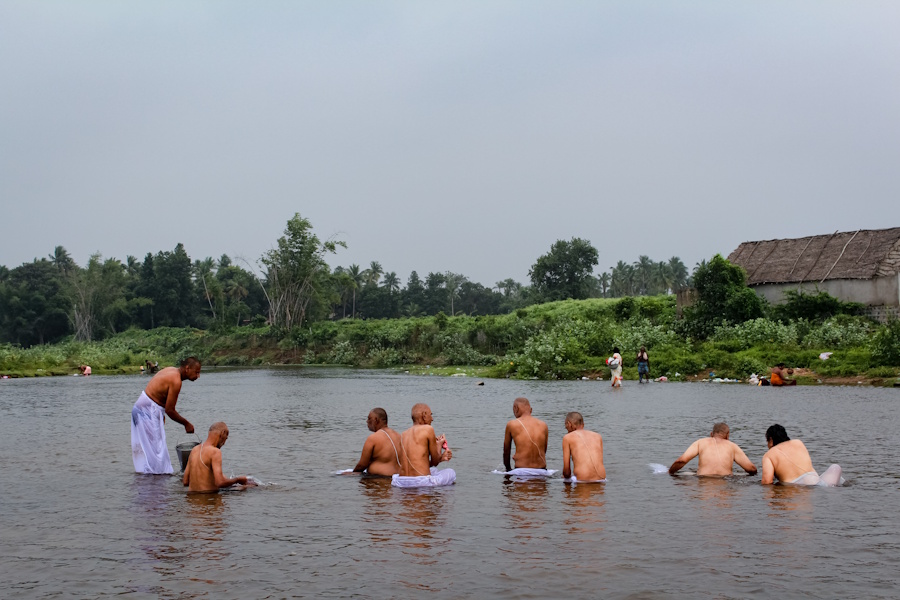
Photo: Wikimedia Commons
River, ecology, people
The utilitarian and management approaches have severed a city’s rivers from their natural ecosystems, from people, and disrupted the upstream-downstream continuum. The riverine areas are ecologically rich and fragile, threatened by the development. The new holistic imagination of rivers in cities must necessarily focus on reconnecting the river with its ecosystem, including floodplains and wetlands.
It could even be something simple but fundamental as redrawing the floodlines to correctly reflect the natural edges of the rivers and riverbanks. “When computer algorithms are used to draw floodlines, there’s an inadequate impression of actual floodplains which allows the administration to claim tracts of land as potentially developable real estate,” architect and planner Aneeta Gokhale Benninger pointed out at a recent conference in Pune. Restoring the space for water can heal the riverine ecology.
Many people disconnected from rivers might find the glitzy lights and amusement rides on constructed riverfronts attractive but the natural bounty that rivers have to offer is fascinating, magical. Seeking people’s participation in little ways, through competitions and volunteering, to implement nature-based solutions for healing and ecologically reviving rivers will help reestablish the people-river relationship. Governments and think tanks might sever the riverine ecology from cities and people; people have to reconnect with it.
As Prof Dutta remarked to us: “I want my river to be swimmable, bathable and drinkable, actually fishable…If I just go and walk, I should be able to enjoy nature. Every city has possibilities, one or two water bodies or big and small rivers. We have to bring back those wild scenic spots. And this should be available to all, the poor too have the right to access nature in its purest form.”
Cover photo: The Hooghly river, Kolkata. Credit: Shobha Surin

